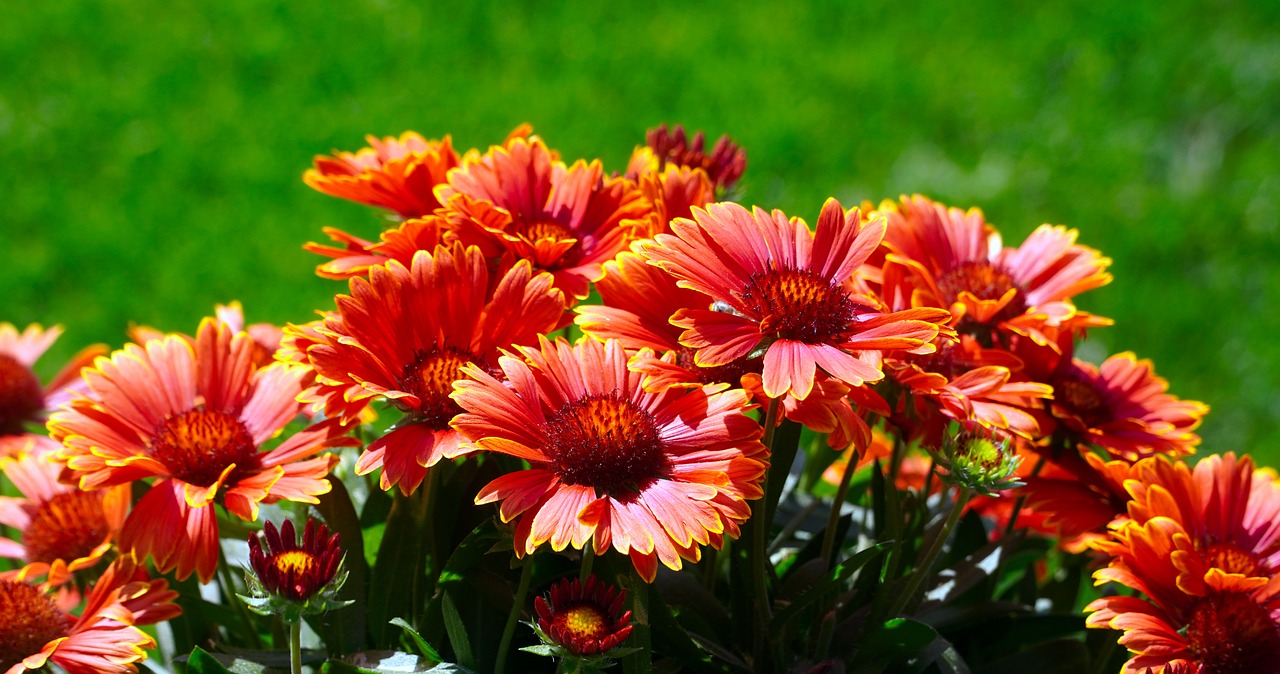
Summer is the perfect time to enjoy the beauty of your garden. But what if you could have non-stop color all summer long? With the right perennials, you can have a garden that blooms all season long. Here are 15 full-sun perennials that will keep your garden looking vibrant and colorful all summer long. Get ready to transform your outdoor space into a dazzling display with our curated list of 15 phenomenal perennials. From fiery bursts to calming blues, there’s a bloom to tantalize every taste.
15 Full-Sun Perennials That Bloom All Summer Long
Blazing Stars: Perennials That Pack a Punch
Blanket Flower

Nothing announces summer quite like the fiery blooms of the Gaillardia, also known as the blanket flower. Its cheerful daisy-like flowers come ablaze in shades of orange, red, and yellow, often boasting contrasting centers that add depth and intrigue. Gaillardia is a low-maintenance champion, tolerating drought and poor soil conditions with ease.
Bonus Tip: Deadheading spent blooms (removing the flower head) encourages continuous flowering throughout the season.
Coneflower
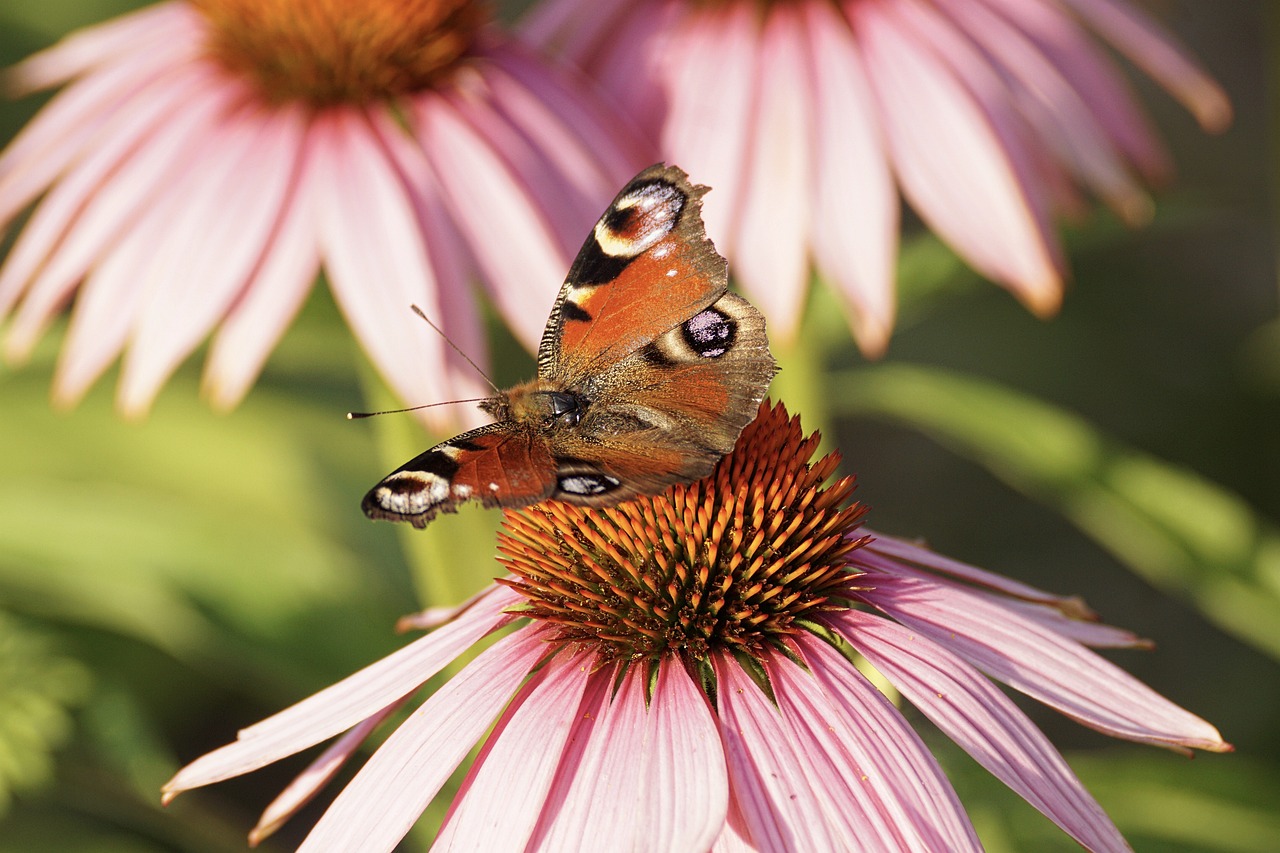
The Echinacea, or coneflower, is a North American native prized for its architectural beauty and resilience. Sturdy stems hold aloft captivating daisy-like flowers that boast a central cone in shades of purple, orange, and yellow. Echinacea is a magnet for butterflies and bees, making it a haven for pollinators.
Fun Fact: Echinacea has been used for centuries in traditional medicine, although its effectiveness remains a topic of debate.
Black-Eyed Susan
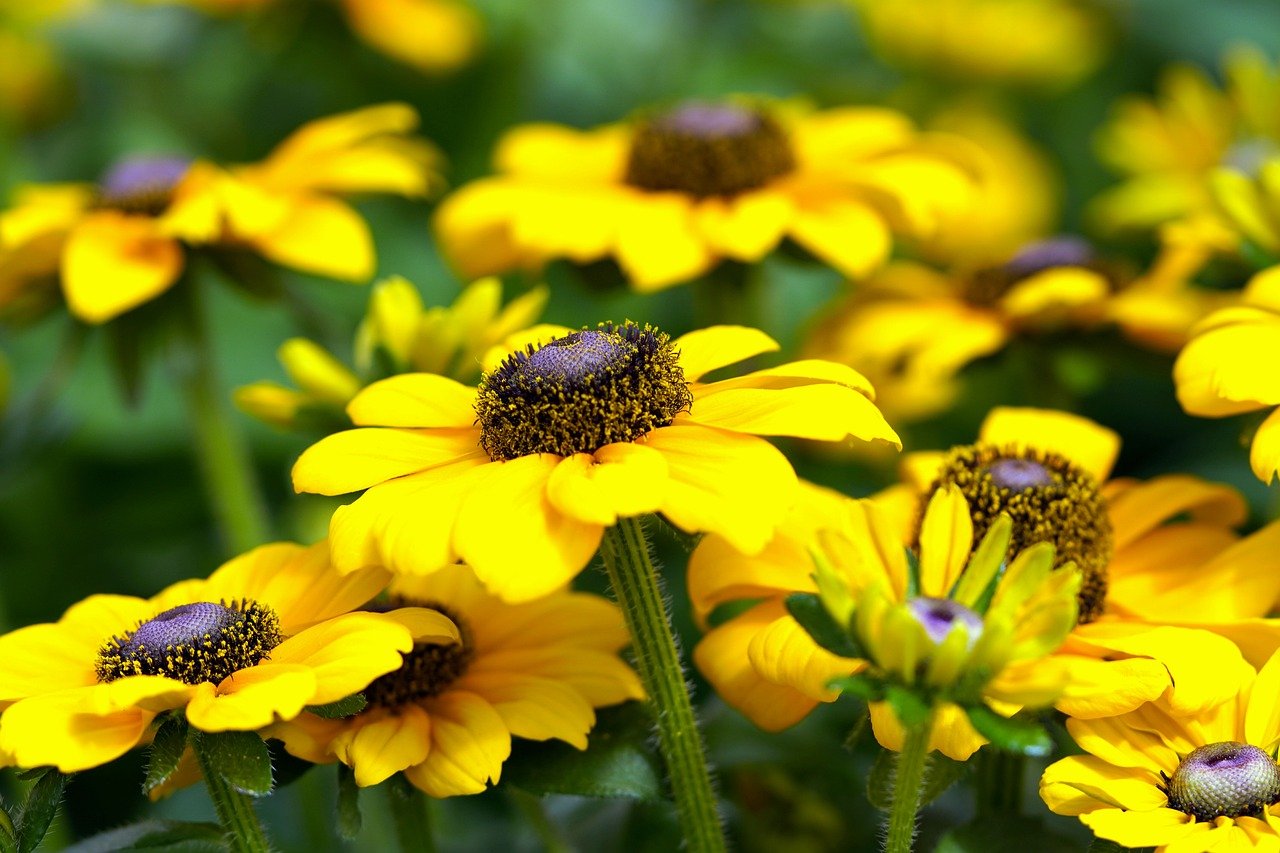
Another sun-loving North American native, the Rudbeckia, or black-eyed Susan, brings a burst of sunshine to any garden. These cheerful giants boast large daisy-like flowers with golden-yellow petals and prominent dark brown centers. Rudbeckia provides a feast for pollinators and adds a touch of wild charm to your landscape.
Did You Know? Rudbeckia comes in a variety of sizes, making it suitable for borders, beds, or even containers.
Butterflies and Beyond: Fragrant Delights
Lavender

Lavender isn’t just about its stunning purple blooms; it’s an experience for all senses. Its fragrant foliage releases a calming aroma that instantly transports you to a Provençal paradise. Lavender thrives in full sun and well-drained soil, making it a low-maintenance addition to your garden.
Perfect Pairing: Plant lavender alongside roses to create a visually and olfactorily stunning combination.
Catmint
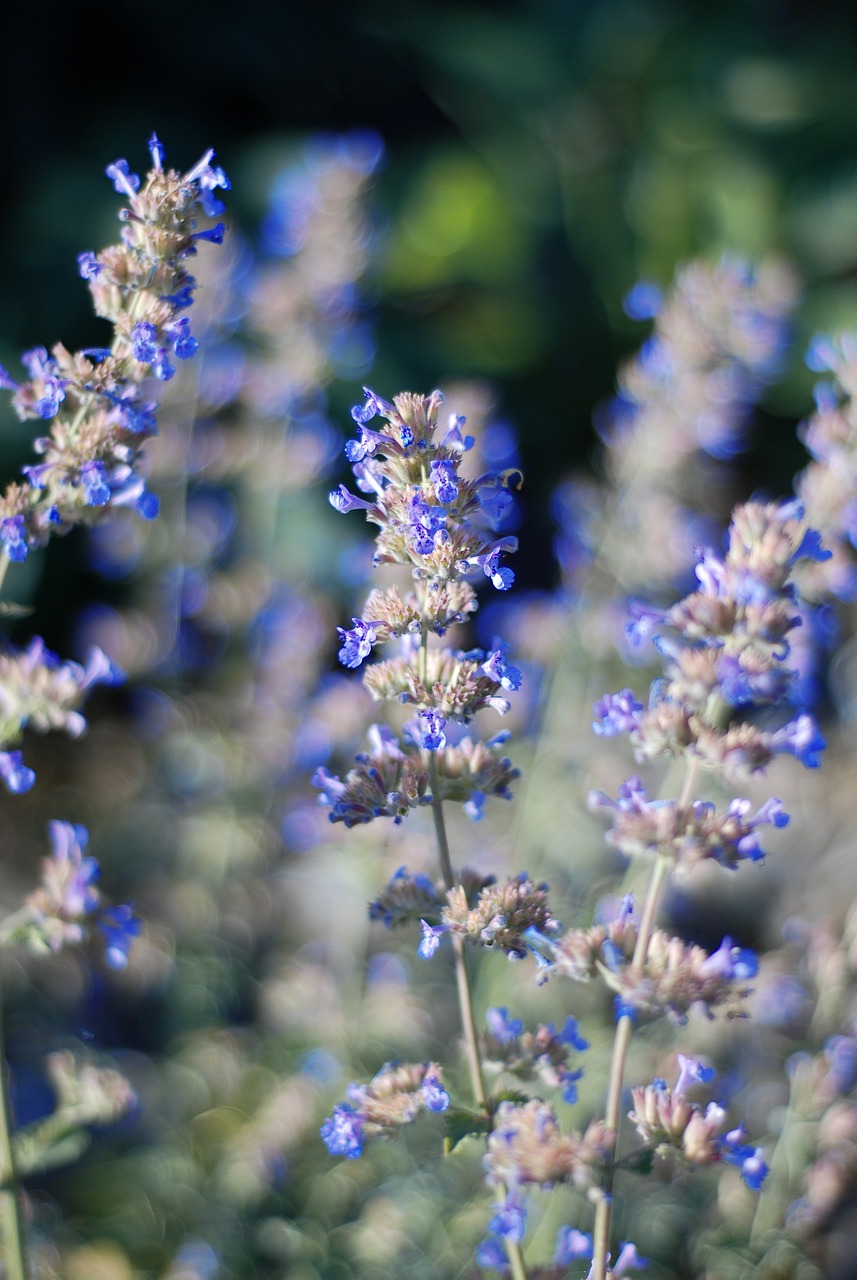
Nepeta, or catmint, is a low-growing perennial that offers a stunning display of lavender-blue blooms throughout the summer. Its fragrant foliage and nectar-rich flowers attract butterflies and beneficial insects, making it a haven for pollinators. Nepeta is known for its resistance to pests and diseases, adding to its low-maintenance appeal.
Design Inspiration: Nepeta creates a beautiful cascading effect when planted over retaining walls or allowed to spill over the edges of containers.
Dianthus (Pinks)
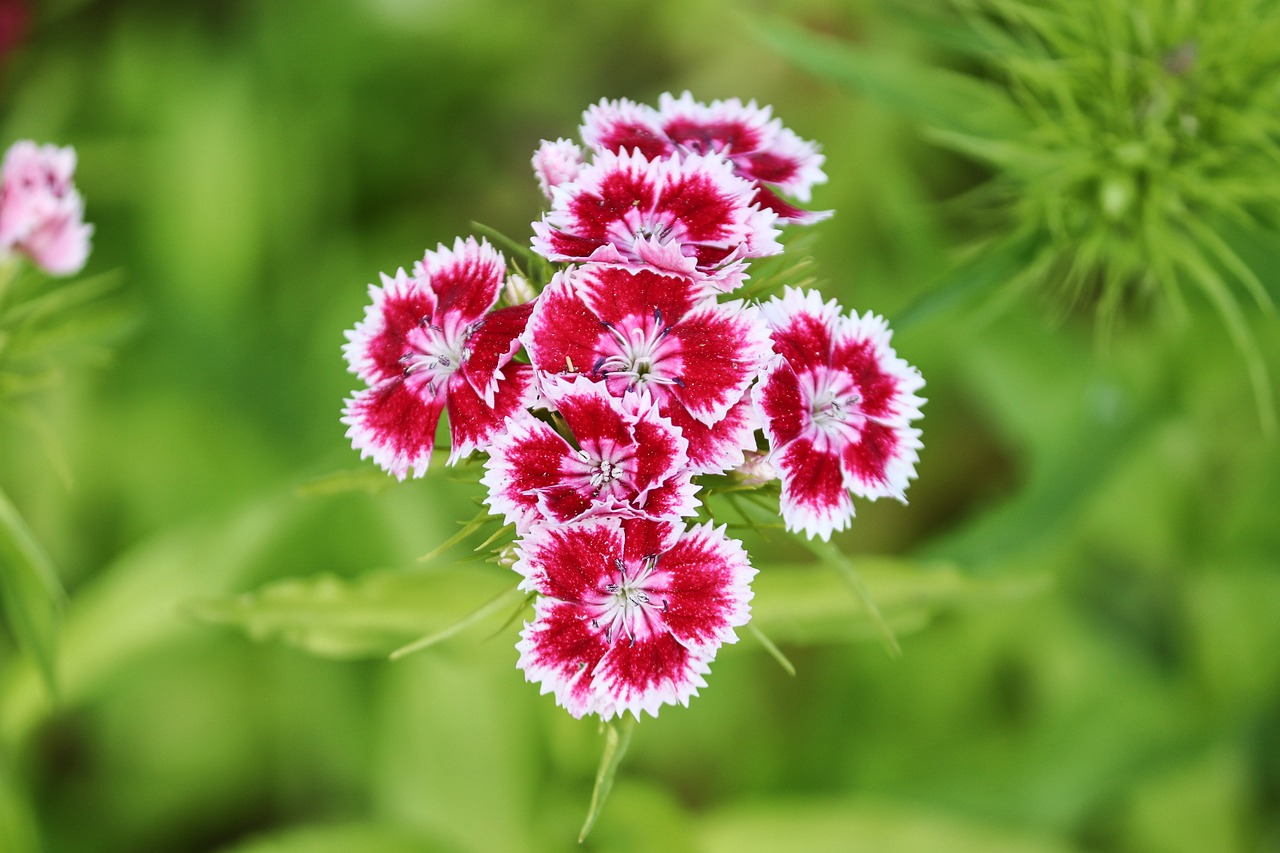
Dianthus, or pinks, are a diverse group of perennials offering a spectrum of colors, from vibrant pinks and reds to delicate whites and purples. Their fringed petals add a touch of whimsy to the garden, while their spicy fragrance adds another layer of sensory delight. Dianthus are known for their long bloom time and tolerance of hot, dry conditions.
Double Duty: Pinks are not only beautiful in the garden but also make excellent cut flowers for vibrant indoor displays.
Long-Blooming Beauties: Sustaining the Summer Spectacle
Salvia (Sage)
Salvia, or sage, is a sun-loving genus offering a wide variety of perennials to suit any taste. With blooms in shades of purple, blue, pink, and white, Salvia provides a long-lasting burst of color throughout the summer. Many Salvia varieties are known for their drought tolerance and resistance to pests and diseases.
Pollinator Paradise: Salvia’s nectar-rich flowers attract hummingbirds and butterflies, making it a haven for these fascinating creatures.
Daylily
The aptly named Hemerocallis, or daylily, offers a spectacular display, even though individual blooms last only a day. However, the plant produces a continuous stream of these vibrant trumpet-shaped flowers throughout the summer, creating a dazzling
effect. Daylilies come in a vast array of colors and sizes, making them incredibly versatile for any garden design.
Easy Keeper: Daylilies are known for their low-maintenance needs, thriving in full sun and tolerating a wide range of soil conditions.
Coreopsis
Coreopsis, or tickseed, is a cheerful charmer that brings sunshine to your garden with its bright yellow, daisy-like blooms. These low-maintenance perennials bloom profusely throughout the summer, adding a touch of carefree charm to any border or bed.
Attracting Attention: Coreopsis is a magnet for butterflies and bees, making it a valuable addition to a pollinator-friendly garden.
Cascading Color: Beauties for Borders and Beyond
Verbena
Verbena offers a vibrant burst of color in shades of pink, purple, red, and white. These trailing perennials are perfect for spilling over containers, hanging baskets, or cascading down retaining walls. Verbena thrives in full sun and well-drained soil, making it a low-maintenance choice.
Design Tip: Verbena pairs beautifully with other sun-loving perennials like coreopsis and salvia, creating a stunning color combination.
Aurinia (Basket of Gold)
Aurinia, also known as basket of gold, is a low-growing perennial prized for its masses of bright yellow, button-like flowers. These sun-worshippers bloom profusely throughout the summer, creating a dazzling golden carpet that spills over borders and walkways. Aurinia is known for its drought tolerance and easy-going nature.
Low-Maintenance Marvel: Aurinia requires minimal care, making it a perfect choice for busy gardeners or those looking for a low-maintenance option.
Yarrow
Achillea, or yarrow, offers a flat-topped cluster of tiny flowers in shades of yellow, white, pink, and red. These airy perennials provide a long-lasting display throughout the summer, adding a touch of textural interest to borders and beds. Yarrow is known for its drought tolerance and resistance to pests and diseases.
Cut Flower Champion: Achillea makes excellent cut flowers, adding a touch of summer charm to indoor arrangements.
Everlasting Elegance: Perennials for Late Summer Blooms
Helenium (Sneezeweed)
Helenium, or sneezeweed, brings a touch of autumnal elegance to the summer garden with its daisy-like flowers in shades of yellow, orange, and red. These tall perennials provide a stunning focal point in borders and add a burst of color that extends well into late summer and even early fall.
Did You Know?: Helenium is named after Helen of Troy, referencing the plant’s legendary beauty.
Sedum (Stonecrop)
Sedum, or stonecrop, is a versatile group of perennials offering a variety of textures and colors. While some varieties boast vibrant summer blooms in shades of pink, red, and yellow, others offer stunning foliage that takes center stage as the season progresses. Sedum is known for its drought tolerance and low-maintenance needs, making it a perfect choice for sunny spots in your garden.
Water Wise: Sedum thrives in well-drained soil and requires minimal watering, making it a water-wise option for eco-conscious gardeners.
Russian Sage
Perovskia, also known as Russian sage, offers a stunning display of airy lavender-blue flower spikes that rise above its silvery-green foliage. These architectural beauties bloom profusely throughout late summer and fall, adding a touch of vertical interest and a calming color palette to the garden. Perovskia is known for its drought tolerance and resistance to pests and diseases.
Showstopper in Fall: Perovskia not only extends the summer bloom season but also carries its ornamental seed heads well into fall, adding winter interest to the garden.
